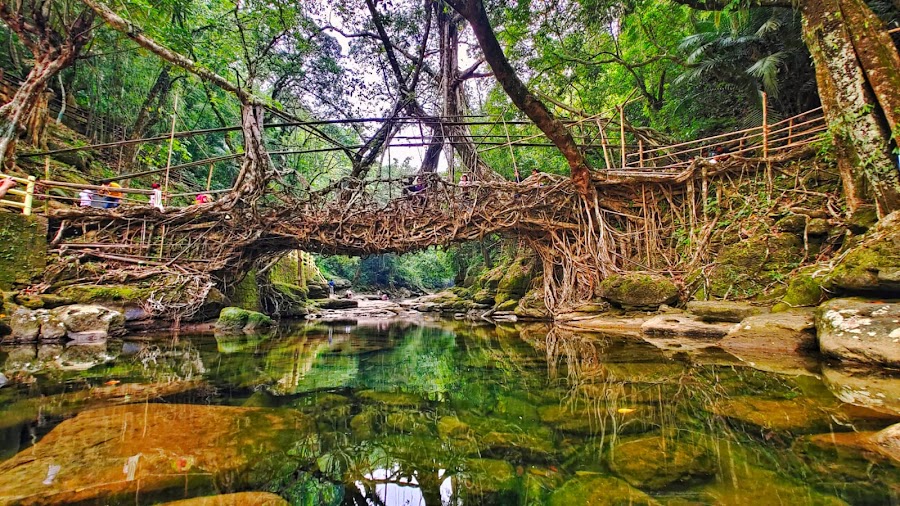
Living Root Bridges
Mawsynram, India
- Experience local Khasi culture
- Explore the Single Decker Root Bridge
- Photograph the unique flora and fauna
- Swim in the natural pools
- Trek to the Double Decker Root Bridge
Known for:
Description:
Venture into the lush, rain-soaked landscapes of Meghalaya and witness the incredible Living Root Bridges. These aren't just bridges; they're living, breathing works of art crafted by the Khasi and Jaintia tribes. Over generations, they've skillfully guided the aerial roots of rubber fig trees (Ficus elastica) across rivers and streams, creating sturdy and sustainable crossings. Imagine walking across a bridge that's constantly growing stronger, blending seamlessly with the surrounding jungle. The most famous examples include the Double Decker Living Root Bridge in Nongriat and the Single Decker Living Root Bridge in Mawlynnong. The experience is a unique blend of adventure, nature, and cultural immersion. Be prepared for some trekking, as reaching these bridges often involves descending hundreds of steps into the valleys. It's a journey that rewards you with breathtaking views and an unforgettable connection to nature's ingenuity.
History:
The history of the Living Root Bridges is deeply intertwined with the indigenous Khasi and Jaintia tribes of Meghalaya. Faced with the challenge of crossing swift-flowing rivers and streams in a region with heavy rainfall, these communities developed a unique bio-engineering technique. For centuries, they have been training the aerial roots of rubber fig trees to grow across waterways. The process is slow and requires patience, taking 10-15 years for a bridge to become fully functional. The bridges are not just practical solutions; they are also a testament to the tribes' deep understanding of their environment and their harmonious relationship with nature. This knowledge has been passed down through generations, ensuring the preservation of this remarkable tradition. These bridges represent a sustainable and eco-friendly approach to infrastructure, showcasing the ingenuity of local communities in adapting to their environment.